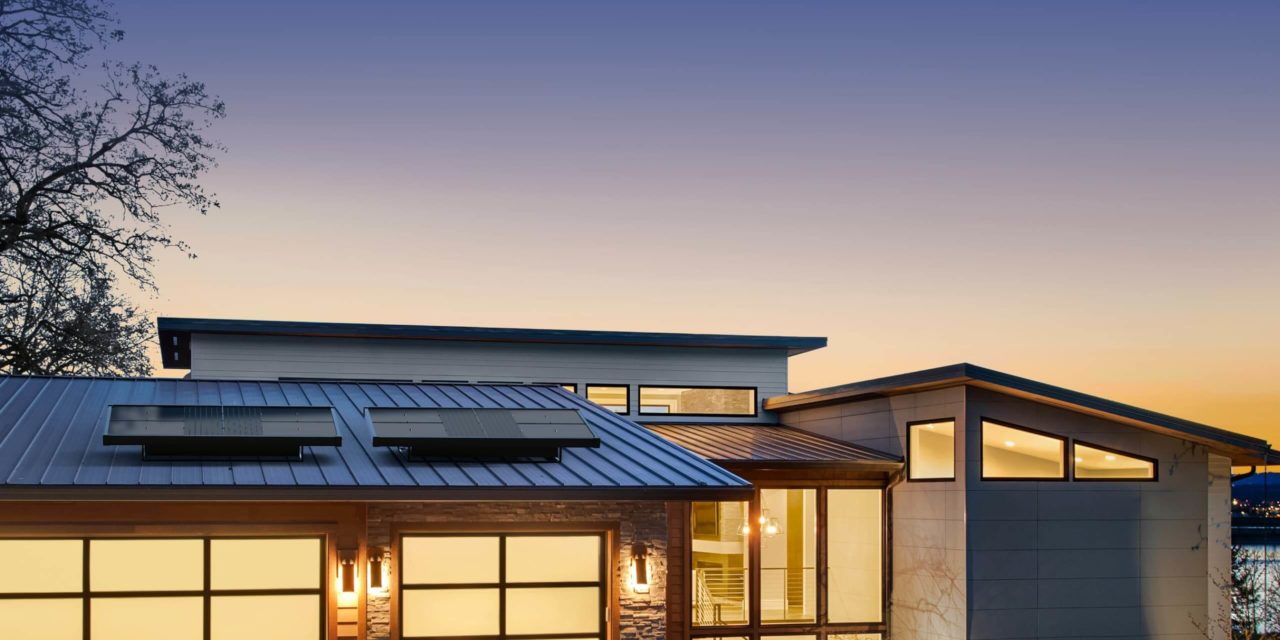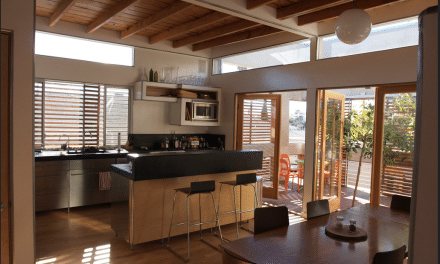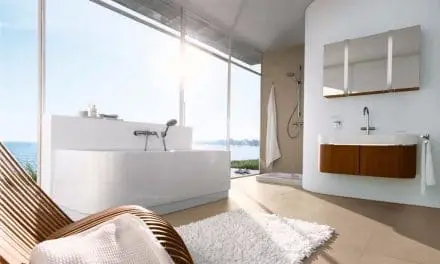Images courtesy Source
By Brian Libby
GOING TO THE SOURCE
Innovation doesn’t get any more refreshing than this: the ability to actually generate our own drinkable water. That means not just catching and storing rainwater but literally turning air into liquid. That’s the extraordinary promise of Source Hydropanels, offering what is known as the world’s first renewable water supply.
Whether you’re looking for truly off-grid living, where not just electricity but water too can be plentiful without connection to the city, whether you live in an arid region susceptible to drought and water rationing, or whether you want to support a company bringing water to struggling, parched communities around the world, Source answers all of those calls.
HOW THEY WORK
Hydropanels look and are proportioned like solar panels. Each panel is 4’x8’x3.5’, requiring 6’x10’ of clear, southeast-facing space able to support at least 340 pounds. They’re mounted on your roof just like the ones that convert light into electricity. In fact, Hydropanels are solar panels, at least in part. (They can also be mounted on the ground. Just look at the one Robert Downey Jr. has. And if you didn’t already love the Iron Man enough, check out his entire sustainable home in Malibu. But back to Source…)
A small photovoltaic array powers a fan embedded in the panel that draws in ambient air, which passes through a hygroscopic membrane that pulls water vapor out of the air. That vapor then condenses into liquid, just like those beads of water on the side of a drinking glass. The water is then treated with minerals (magnesium and calcium) to make it taste perfect every time, much like purified water. The water then travels through flexible piping directly to your kitchen water tap or refrigerator-water dispenser.
No pipes. No electricity. No plastic.
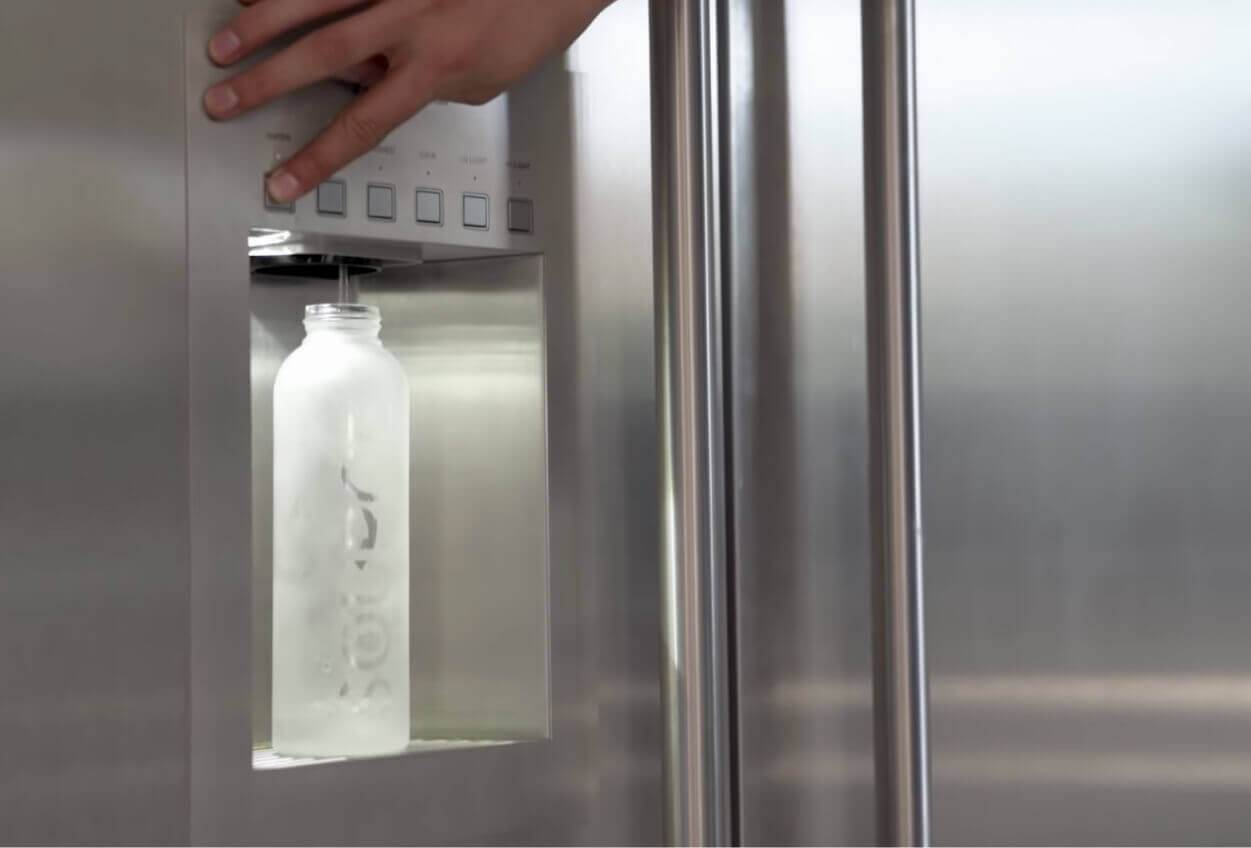
As the company explains, these Hydropanels work differently than dehumidifiers that require lots of electricity to extract water using lead and other metallic residues. Source panels passively condense water and generate their own electricity, even powering its battery so you can dispense water when it’s cloudy or after nightfall.
In a residential setting, a standard array of two Hydropanels (ranging in cost from $5,500 to $6,500 for the pair) can be enough to supply water to a family of four to six people: about 150 to 300 liters per month. There’s a 30-liter reservoir with an integrated sterilization system that can safely contain your water supply for about a week. And, the panels have an expected life span of 15 years.
Source Hydropanels also connect to an app. The company has created its own real-time analytics sensor, Source Informed, to measure the production of water in its panels around the world in order to maintain quality. Right from your smartphone, you can keep track of your water production, its effect on the environment, and when your panels need maintenance.

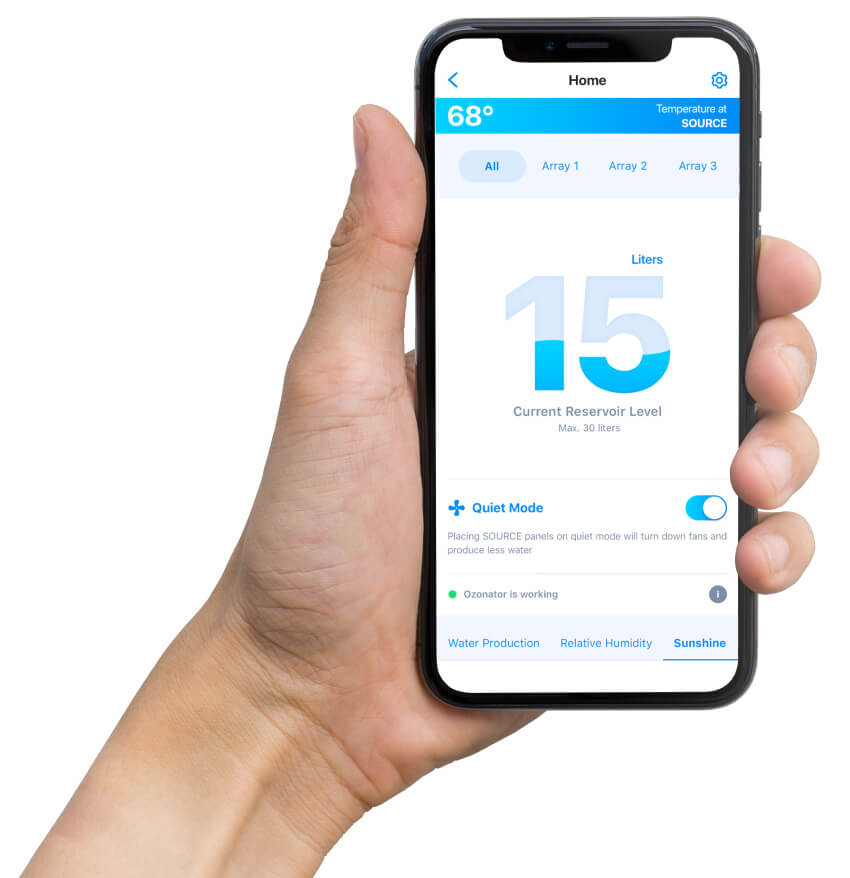
WHAT’S DIFFERENT
Based in Scottsdale, Arizona, Source was founded by Dr. Cody Friesen, the Fulton Engineering Professor of Innovation at Arizona State University. (Not to mention senior sustainability scientist at the ASU Global Institute of Sustainability, and a Lemelson-MIT Prize recipient who holds more than 100 patents. He’s also served two terms as co-chair of the Energy Subcommittee for the U.S. Department of Commerce’s Manufacturing Council.) He is a serial founder whose career has focused exclusively on climate-related/sustainability innovation, servicing communities that are lacking renewable resources.
Friesen had been working on renewable energy projects in emerging markets like Indonesia and Central America when he began to notice their common challenge of scarce fresh water. Noting the disconnect of a fisherman living somewhere with 10 feet of rainfall per year with a smartphone and solar panels on his roof but nothing to drink, he got to work.
Part of Source Hyrdopanels’ inherent genius is that they can create water in even the most arid settings. Rather than water that has gone from sky to ground to pump and treatment before being bottled or sent down a pipe, Source water instead is a sort of digitization of water and can essentially be provided anywhere.
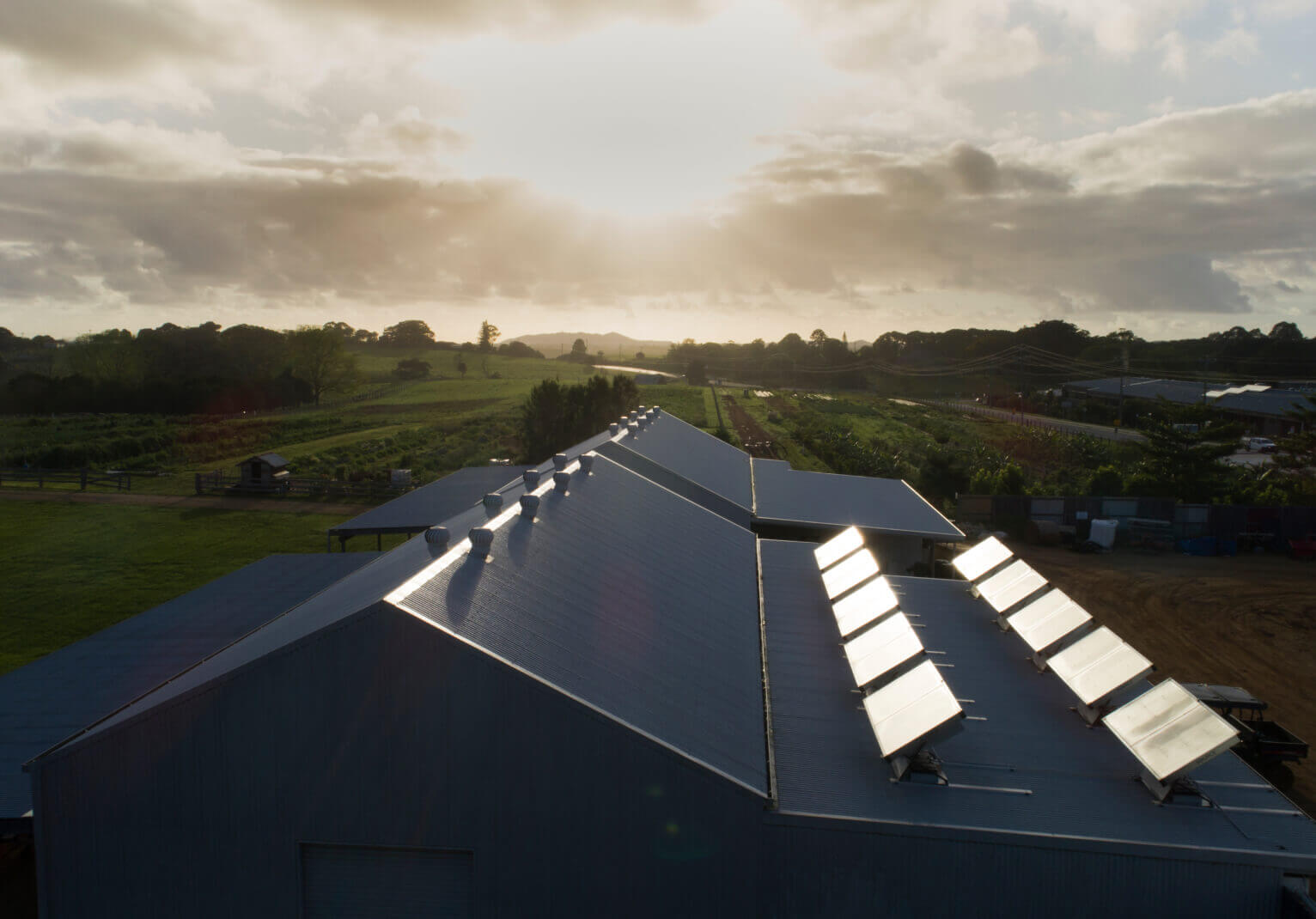
WHY THIS IS IMPORTANT
Clean fresh water is becoming scarcer around the globe. Only 3 percent of the world’s water is fresh water. While sea levels rise due to climate change, snowfall that supplies our mountain lakes and rivers, which in turn supply municipal water systems, are dwindling. What’s more, some city water systems have become contaminated, such as the case of Flint, Michigan, from 2014-’19.
Source has been able to implement infrastructure-independent hydropanel fields and residential installations in communities where clean drinking water is either unavailable due to groundwater contamination, unreliable or non-existent water sources. Many of these communities are under near constant boil orders and/or rely on wasteful plastic-bottled water. Hydropanels are an immediate solution to a large and growing issue in these communities.
The benefit for homeowners, particularly in drought-stricken areas, where water infrastructure is increasingly strained, is that the Hydropanels provide an independent, renewable drinking water resource to supplement their water needs. They also have value in augmenting or supporting sustainability homes certifications and off-grid residences.
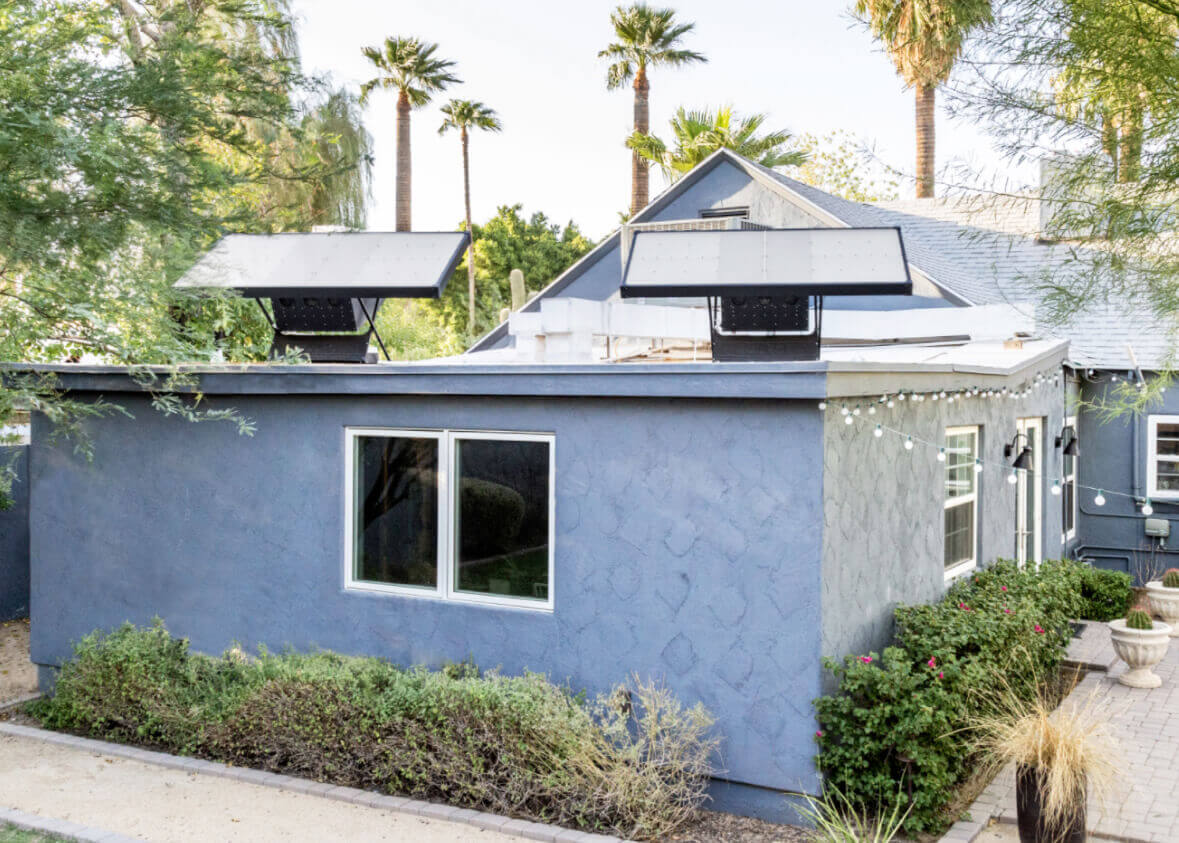
WATER WITH SOCIAL IMPACT
But Source Hydropanels don’t just have fresh water projects in more than 48 countries. The company is prioritizing giving back as part of its model. In addition to residential and commercial panels, Source also bottles its water. And for every liter purchased, Source will donate a liter to an area in need. The company is officially certified as a B Corporation, a distinction given to businesses that meet high standards for verified public social benefit, transparency and legal accountability to balance profit and purpose.
If Source has anything to say about it, someday the idea of getting your drinking water from an underground pipe that’s traveled many miles will seem antiquated. Source is just one company, but with the Hydropanel they’ve tapped into innovation that will replenish even the most parched among us.


